COVID-19 has undoubtedly disrupted the personal and professional lives of all ophthalmologists. But for many YOs, the disruption has provided new opportunities for success. This month, YO Info speaks with five determined young physicians from around the country who have thrived in building solo practices during the past year.
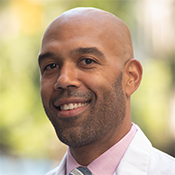 |
Brandon B. Johnson, MD
New York Retina Center
New York City
After a one-year internship in general surgery at the Hospital of the University of Pennsylvania, Dr. Johnson completed an ophthalmology residency at the Wills Eye Institute in Philadelphia and a fellowship in vitreoretinal surgery at Emory University in Atlanta. He started his own practice in January 2020.
|
Why did you make the decision to go solo?
Working as an employee of a large group in California, I was able to reflect on my career objectives and came to the conclusion that in order for me to truly control my own destiny, I would have to become my own boss and start my own practice. It was always a passion of mine, but the path to success always seemed unclear until early last year.
So I spent January and February restoring my New York City contacts and began thinking about where I would want to practice. In March, at the height of the pandemic, I flew to New York twice to meet potential associates, look at practice spaces and interview groups for part-time work. I then spent April and May negotiating contracts, choosing an electronic health record (EHR) system, opening bank accounts and beginning the long, painful process of credentialing with insurance companies. In June, I finally moved back to NYC and began the process of implementing my EHR — a grueling 12-week process that culminated in my first patient in August.
How difficult was it to open a practice?
The blessing of being a retina specialist during a pandemic is that as an essential worker, I was able to keep my doors open. In fact, other than four weeks at the end of March and the beginning of April last year, I've been seeing a high volume of patients face-to-face regularly. But the pressures of the pandemic were definitely palpable during the early months.
Daily mask wearing, distancing and sanitation heightened the stress of an already highly anxious moment — I truly feel that our country is going through a great social trauma that has left behind death and destruction that will alter our lives for years to come. Now a year into the pandemic, patients are coming back who have neglected their health, and some are suffering the consequences.
What have you learned about yourself now that you’re in solo practice?
Going solo makes it mandatory to take responsibility for every component of the practice at a granular level. Not only do I have to be competent and skilled as a retina specialist and surgeon, but I also have to provide excellent customer service and meet the needs of a fast-paced, urban clientele. It’s quickly become clear that the “buck stops” with the practice owner. I’ve turned into my own technical support service, billing service and sometimes maintenance service.
So in the end, if something needs to get done, you need to do it yourself (or pay someone else to do it) — often a trial by fire. Knowing what you “don’t know” is also important, and I speak with consultants from time to time and mentors who are solo in order to work on my blind spots.
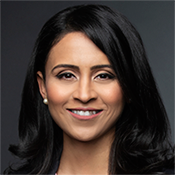 |
Kruti P. Dajee, MD
Greater Dallas Retina
McKinney, Texas
Dr. Dajee completed her residency and surgical retina fellowship at the University of Texas Southwestern. She started her solo practice in May 2020.
|
What resources were the hardest to procure once you got up and running?
Personal protective equipment (PPE) was very difficult to come by in the early days. When you don’t have set accounts and a preferred purchase history with larger vendors, they don’t prioritize solo practitioners. So to stock the clinic, my family and I would tag each other via text and run to any store that seemingly had a few bottles of hand sanitizer or wipes — if we got lucky. Some family members even spent hours scouring the internet for any supply of PPE available to keep the practice afloat.
Whereas most established practices were eligible for stimulus payments and Paycheck Protection Program loans, this wasn’t an option for us. I simply had no way of demonstrating that we had incurred a loss since the practice wasn’t open prior to the pandemic.
So I had to reduce capital investment in equipment because of all the uncertainty. Hiring staff was limited as well — for a long time, I was the full-time technician, photographer, scribe, surgery scheduler and physician. Now I have a front desk staff and technician and it feels like luxury!
What difficulties have you faced with patients?
First impressions were and are still key (especially for new patients), but it was hard in the early days of the pandemic — it’s simply difficult to connect face to face while wearing a mask. So I’ve had to be very mindful to keep a tight balance between not having patients wait too long, spending enough “face time” with them and minimizing exposure between everyone in the office. In the end, showing our patients that we are earnest about their safety has really helped.
Looking back, I’ve done significantly better than expected (COVID or not) by opening my solo practice. Could my growth have been greater had it not been for the pandemic? Maybe. But I have zero regrets and have leaned on a community consisting of family, friends, referral doctors and other solo doctors.
At the end of it all, the whole world lived through the same collective experience, and the resulting understanding and kindness really helped me survive the year.
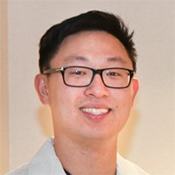 |
Ethan Wonchon Lin, MD
Westwood Eye
Las Vegas
Dr. Lin completed his ophthalmology residency at Jules Stein Eye Institute, followed by a fellowship at Duke University. Early on in his career, he identified an unmet need for personalized eye care in Las Vegas and opened up his solo practice in June 2020.
|
What adjustments did you have to make in your workflow during the pandemic?
Given that my practice started in June during the height of the pandemic, we had the unique ability to determine from the start how patients would flow in and out of the clinic. Thus, from the grand opening to the present day, Westwood Eye has always been prepared for COVID. Only one patient was scheduled in the clinic at any time — no double booking. And I was the only person to interact with the patient in close proximity — no techs or scribes. Patients felt very comfortable with this setup because it limited their interactions with other people.
In fact, I’ve had patients transfer their care to Westwood Eye because they were looking for a practice without crowded waiting rooms, without multiple staff physically involved in their care and without the chaos of a larger practice. Most importantly, patients love the fact that they are receiving much more personal time and care from their ophthalmologist.
Were you forced to reduce staff and capital investment?
Due to difficulty obtaining basic equipment and supplies — everything from PPE to exam chairs, we made the decision to outfit only one exam lane and expand as needed pending on the direction of the pandemic. As time went by, we were able to invest more into the practice.
Thankfully, I was able to hire the staff I needed but deliberately kept our numbers low. As a result, I was my own tech, scribe and biller. It’s definitely more work to perform all of those tasks, but well worth it as a learning experience and as a benefit to our patients!
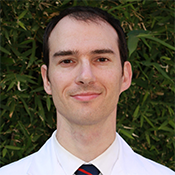 |
Richard L. Rabin, MD
Walnut Creek Eye Care
Walnut Creek, Calif.
Dr. Rabin trained at Albany Medical College and completed his residency at Nassau University Medical Center and a glaucoma fellowship at Case Western University. Afterwards, he spent more than a year working as an employee at Bliss Eye Associates in Sacramento before purchasing a practice in Walnut Creek.
|
How did your practice change during the pandemic?
I began practicing in December 2019, so we were just getting things settled when COVID disrupted our flow completely. Initially, during lockdown, we were open only one to two half days per week for seven weeks and only just for urgent patients. Very little was known about the virus, so we were hesitant to have patients come in if it wasn't absolutely necessary. We often only had only one of our two techs come in as well to limit unnecessary exposures. Surgery went on hold as well.
And now that we are opening back up, things do look different:
- We check temperatures of staff and patients when they arrive.
- We have patients dilate in their cars when things get busy to keep the waiting room minimally occupied.
- We no longer have patients go from one exam room to another — the room they start in is the same room they go back to after testing is completed.
- We tape the top of our masks to prevent equipment from fogging up and also to prevent the mask from finding its way off our face.
- We converted our dilating room into a fundus photo room since having patients sit in close quarters is out of the question.
Were you able to hire the staff you needed?
It was difficult to hire staff once the federal government unemployment supplement started. We did hire an excellent ophthalmic technician who was also our optician, but she left shortly thereafter, and it was very difficult to find an optician or technician to replace her.
But my wife, Chloe, a registered nurse, has been instrumental in keeping the practice running. Before leaving, our optician gave her a crash course in eyeglasses and I got her up to speed on everything ophthalmology. Chloe filled in on her days off from her hospital position, sometimes working seven days straight.
I’m proud to say that on her first day as a tech, we managed to see 18 patients without any complaints. We eventually found an optician, but our office now benefits from Chloe knowing the optical side of the office inside and out!
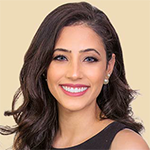 |
Shaam S. Mahasneh, MD
Advanced Eye & Laser Center of Mansfield
Mansfield, Texas
Dr. Mahasneh completed her residency and fellowship in cornea, external degree and refractive surgery from the University of Texas Southwestern/Parkland Memorial Hospital, where she is also now a clinical associate professor of ophthalmology. Dr. Mahasneh opened her solo practice on June 29, 2020.
|
What were the biggest challenges you faced opening a practice in the middle of the pandemic?
A major hurdle — and one that is still ongoing — is the inability to market and spread awareness of the practice opening. The social events, open houses and meet-and-greets simply are not possible. Primary care offices also did not allow anyone to enter their clinics, and so meeting any possible referring physicians became exponentially difficult. Moreover, patients limited their routine visits to only those appointments that were absolutely necessary, which created a slower-than-expected start to our practice.
From a collegial perspective, there was also a heightened sense of isolation for solo practitioners due to all of the canceled local and national professional meetings. This is also true from an interdisciplinary perspective, as so many primary care physicians employed telemedicine and limited their own clinic volumes (and thus many of their referrals).
Did the pandemic force you to take on more responsibilities than you expected?
Yes. I was only able to hire one fulltime staff member to handle front and back office duties. I did everything else, including all technician and photography duties. But this was also not totally out of the ordinary for a young solo practice. It’s common to find yourself wearing these multiple hats — one minute you’re the technician, the next minute you’re the surgery scheduler, the next minute you’re the physician examining patients and the next minute you’re the biller, ensuring that the appropriate codes are attached to the patient encounter and that a claim is sent off to the insurance company.
In the end, wearing these different hats has also really allowed me the opportunity to find various points in our workflow and practice patterns that can be optimized, modified or improved.